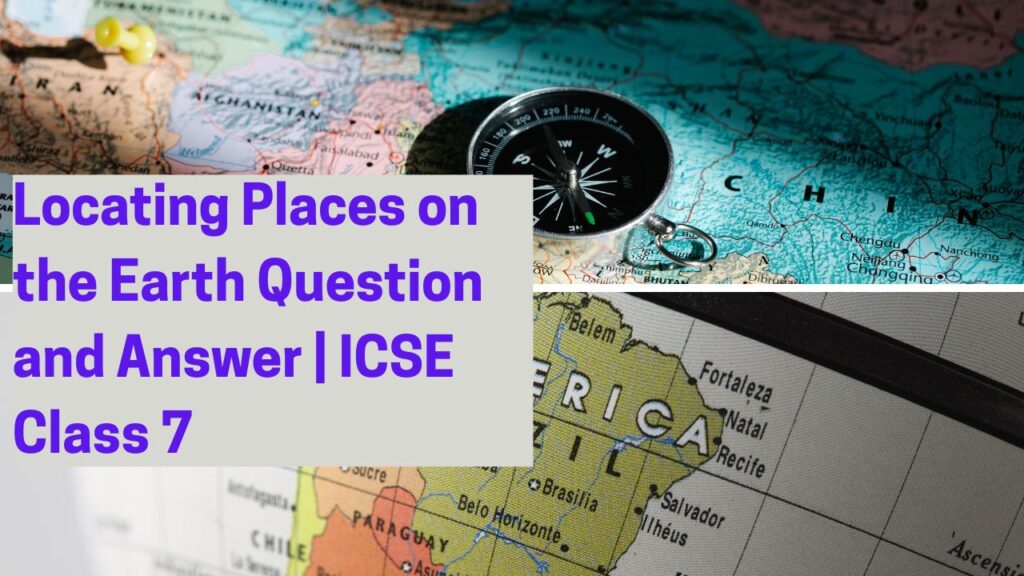This page presents key South America Location and Physical Features ICSE Class 7 Questions and answers to help students understand the continent’s geography. The chapter covers South America’s exact location, major mountains, rivers, plateaus, plains, and surrounding water bodies. These solved Q&As make it easier for ICSE Class 7 students to revise and prepare effectively for exams.
A. Tick the correct answers:
- Which of the following water bodies does not surround South America?
Atlantic Ocean, Pacific Ocean, Caribbean Sea, Mediterranean Sea
Ans: Mediterranean Sea - The capital of Argentina is:
Buenos Aires, La Paz, Bogotá, Montevideo
Ans: Buenos Aires - The highest peak of the Andes Cordillera is:
Mount Cotopaxi, Mount Tupungato, Mount Aconcagua, Mount Chimborazo
Ans: Mount Aconcagua - The La Plata river basin is also known as the:
Llanos, Selvas, Gran Chaco, Pampas
Ans: Pampas - The Amazon River rises in the mountains of which of the following countries?
Brazil, Peru, Argentina, Bolivia
Ans: Peru
B. Fill in the blanks:
- The mainland of South America is separated from Tierra del Fuego Island by the Strait of Magellan.
- Brazil was colonized by the Portuguese.
- The Angel Falls is located in the Guiana Highlands.
- The Western Coastal strip of South America lies between the Andes Cordillera and the Pacific Ocean.
- The Amazon River drains into the Atlantic Ocean.
C. Give reasons for the following:
- The South American colonies rebelled against the Spanish and Portuguese rulers.
Ans: The South American colonies rebelled due to:- Exploitation of natural resources by Spain and Portugal.
- Oppression of native populations and forced labor.
- The influence of the American and French Revolutions, which encouraged independence.
- High taxes and trade restrictions, which hurt local economies.
- Nationalist movements led by leaders like Simón Bolívar and José de San Martín.
- Exploitation of natural resources by Spain and Portugal.
- The Amazon River is an important waterway.
Ans: The Amazon River is important because:- It is the second-longest river in the world and the largest by volume.
- It provides water for agriculture, fishing, and hydroelectric power.
- It serves as a major transport route for remote areas.
- It supports a diverse ecosystem, including the Amazon Rainforest.
- It is the second-longest river in the world and the largest by volume.
Look at the essay on Storybook My Dream Business Essay- 5 Checklist and 4 things determine the type of Business
Also, look for the Study Guide of Major Landforms and Waterbodies of the Earth
D. Answer the following questions:
- What is the latitudinal and longitudinal extent of South America? Which important latitude passes through the northern part of this continent?
Ans:- The latitudinal extent of South America is 12°N to 55°S.
- The longitudinal extent is 35°W to 81°W.
- The important latitude passing through the northern part is the Equator (0°).
- The latitudinal extent of South America is 12°N to 55°S.
- Which countries form Latin America?
Ans: Latin America includes countries in South America, Central America, and the Caribbean where Spanish and Portuguese are spoken. Some South American countries in Latin America are:- Brazil, Argentina, Chile, Peru, Colombia, Venezuela, Ecuador, Paraguay, Uruguay, and Bolivia.
- Brazil, Argentina, Chile, Peru, Colombia, Venezuela, Ecuador, Paraguay, Uruguay, and Bolivia.
- What is the name given to the western mountains of South America? Mention three characteristic features of these mountains.
Ans: The western mountains of South America are called the Andes Mountains.
Three features of the Andes:- They are the longest mountain range in the world, stretching over 7,000 km.
- They have active volcanoes, including Cotopaxi and Ojos del Salado.
- They create a rain shadow effect, making the Atacama Desert one of the driest places on Earth.
- They are the longest mountain range in the world, stretching over 7,000 km.
- Name the three river basins found in the central lowlands. What is the meaning of Llanos and Selvas?
Ans: The three river basins in the central lowlands are:- Amazon River Basin
- La Plata River Basin
- Orinoco River Basin
- Amazon River Basin
- Llanos: Tropical grasslands found in Venezuela and Colombia.
Selvas: Dense rainforests found in the Amazon Basin. - Write a short note on the Eastern Highlands.
Ans: The Eastern Highlands consist of:- The Brazilian Highlands, which cover most of Brazil and contain rich iron ore and mineral deposits.
- The Guiana Highlands, found in Venezuela, Guyana, and Suriname, where Angel Falls (the world’s highest waterfall) is located.
- They have a rolling plateau with rivers that drain into the Amazon and La Plata Basins.
- The Brazilian Highlands, which cover most of Brazil and contain rich iron ore and mineral deposits.
Name two countries through which the Amazon River passes.
Ans: The Amazon River flows through Peru and Brazil.


